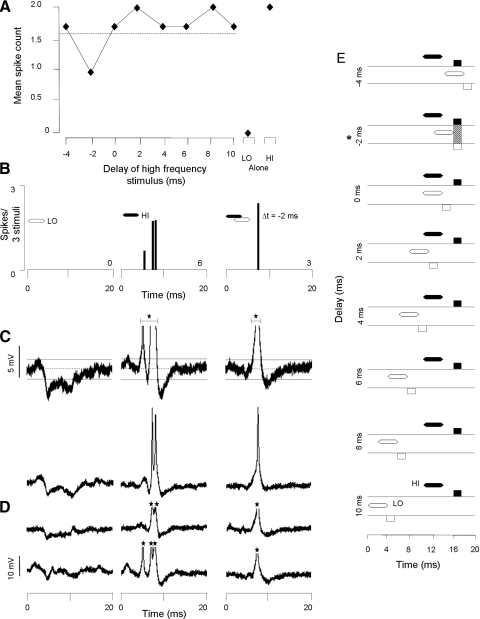FIG. 8.
Some inhibitory combination-sensitive interactions are associated with low frequency–evoked transient hyperpolarization. A: delay curve shows spike suppression at a delay of −2 ms. Dashed line indicates criterion for combination-sensitive inhibition. B: PSTHs show spiking responses to the LO and HI sweeps alone as well as at the best delay (−2 ms). C and D: averaged (n = 3) and individual voltage traces show low frequency–evoked hyperpolarization that suppresses high frequency–evoked spike discharge. Resting membrane potential = −51 mV, spike height = 35 mV. See Fig. 2 for protocol. E: graph schematically represents the timing of hyperpolarizations (boxes below the horizontal lines) and depolarizations (boxes above the horizontal lines) in response to the HI and LO frequency sweeps (black and white, respectively). The timing of sound presentations is shown by black (HI) and white (LO) hexagons above the horizontal lines. Hatched rectangles indicate an overlap of HI and LO frequency-evoked membrane potential changes. Inhibited delays are indicated by an asterisk at left. Note that the spike discharge of the neuron is suppressed when the LO-evoked hyperpolarization is aligned with the HI-evoked depolarization.

